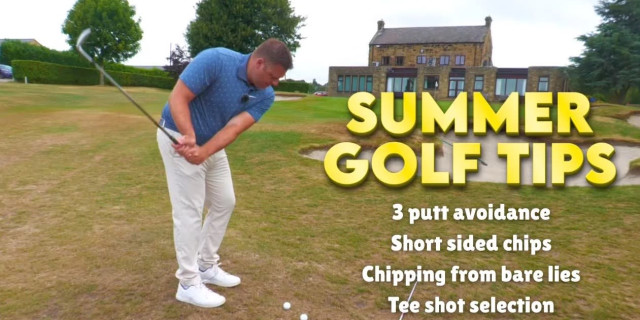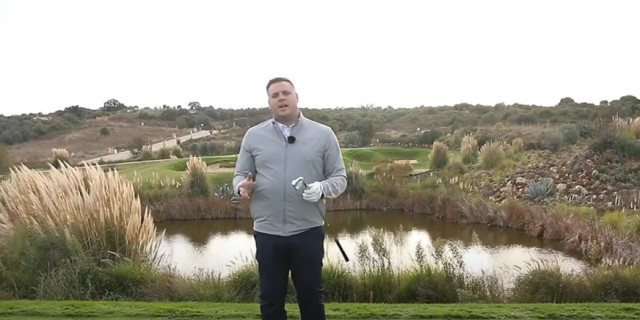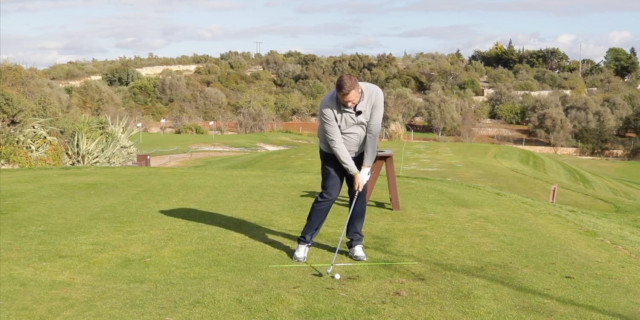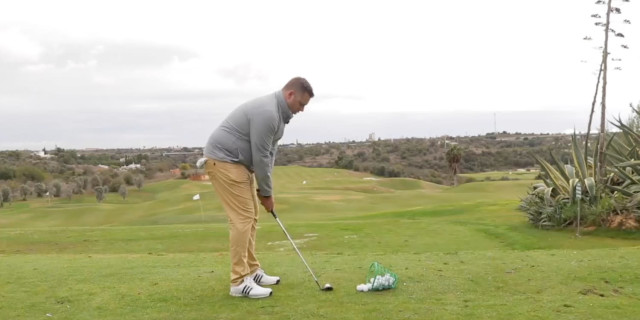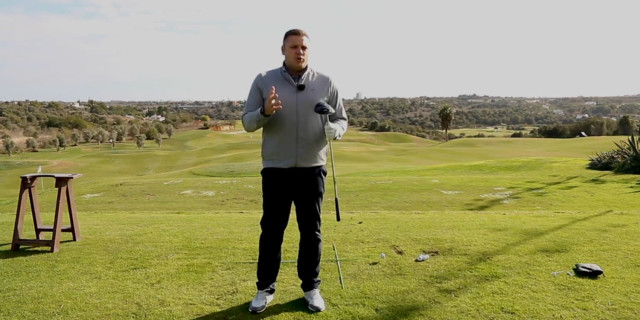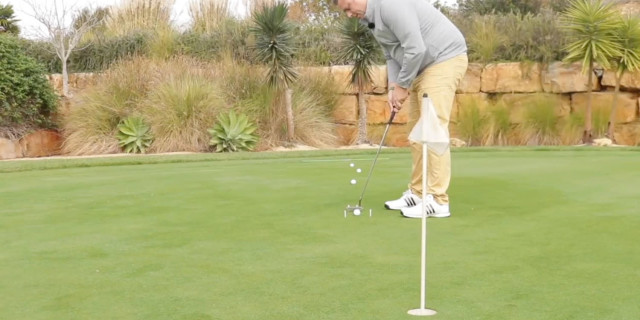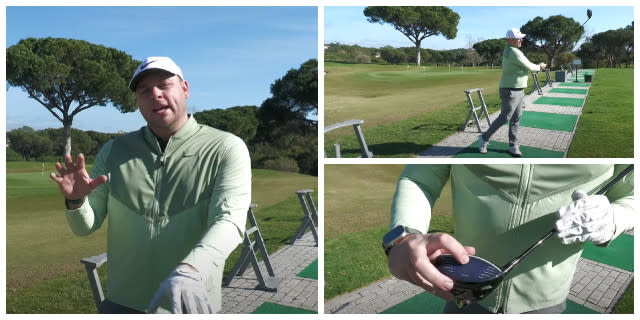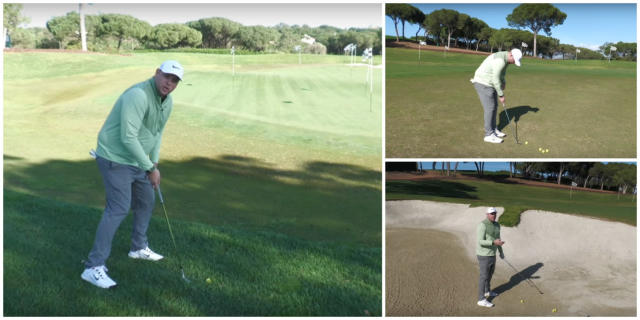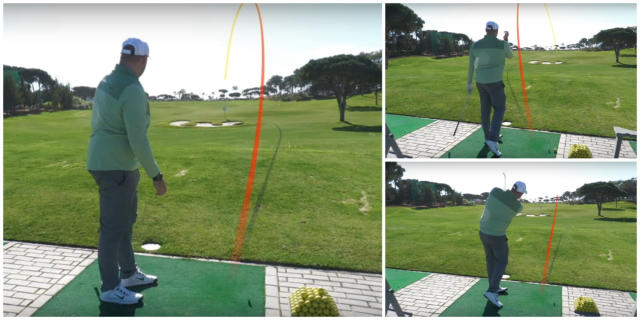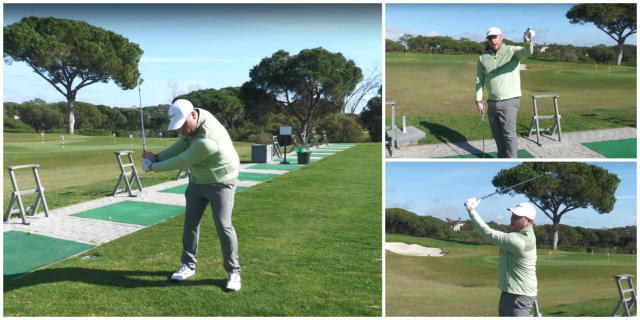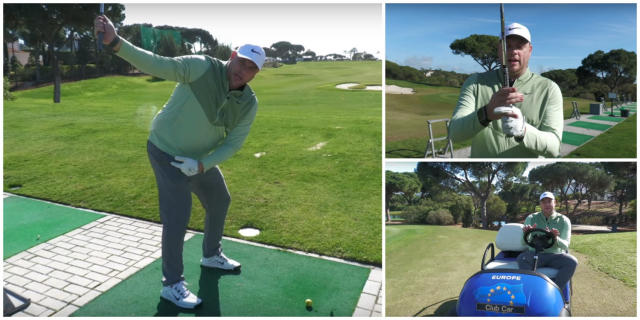Rules Relating to the Putting Green
(Rule 16-1)
Most golfers will take at least one third of their strokes in any round on the putting green. It therefore stands to reason that golfers should understand the Rules of Golf relating to this area of the course.
A ball is on the putting green when any part of it touches the surface of the putting green. If a ball is at rest on the apron (fringe) but part of it overhangs the green, it is not on the putting green and may not therefore be marked and lifted under Rule 16-1b. When any part of a ball does touch the putting green then, providing its position is marked first, there is no limit to the number of times that it may be lifted, cleaned and replaced, unless the player unduly delays play in doing so.
The line of putt is the line that the player wishes his ball to take after a stroke on the putting green, including a reasonable distance on either side of that intended line, and it extends from where the ball is at rest to the hole, but not beyond. The line of putt must not be touched except:
(i) The player may remove loose impediments, provided they do not press anything down.
(ii) The player may place their club in front of the ball when addressing it, provided they do not press anything down.
(iii) In measuring, Rule 18-6.
(iv) In lifting or replacing the ball, Rule 16-1b.
(v) In pressing down a ball-marker.
(vi) In repairing old hole plugs or ball marks on the putting green, Rule 16-1c.
(vii) In removing movable obstructions, Rule 24-1.
The only types of damage that a player may repair on a putting green before making their stroke, are old hole plugs and damage caused by the impact of a ball, commonly referred to as a pitch marks. Both of these types of damage may be repaired, whether or not the player’s ball lies on the putting green. The general penalty (two strokes in stroke play and loss of hole in match play) applies for repairing any other damage to the putting green, e.g. spike marks, heel prints, animal scrapes and score marks caused by carelessly dragging a flagstick over the surface. Of course, you may and should repair spike marks, and any other damage to the putting green, after you have finished play of the hole. You may also repair such damage during play of the hole, providing it is not anywhere in the vicinity of the hole, or the intended line of play for any player in the group.
A player must not test the surface of any putting green by rolling a ball or roughening or scraping the surface. However, contrary to what you may have heard, a player is not penalised for cleaning mud from their ball by rubbing it on the surface of the green (Decision 16-1d/5), or casually returning another player’s ball by knocking it across the putting green with a putter (Decision 16-1d/1). These two practices only incur a penalty if the player’s intention is to test the surface of the green; but they are bad practices, which are best avoided.
A player must not stand astride their line of putt to make a stroke (i.e. croquet style), except that no penalty is incurred if the stance is inadvertently taken, or is taken to avoid standing on another player's prospective line of putt (Rule 16-1e).
A ball is not holed unless all of it is below the level of the lip of the hole and is at rest in the hole. It may be sitting on top of another ball, or some other object, providing it is wholly below the level of the lip. When any part of the ball overhangs the lip of the hole, the player is allowed reasonable time to reach the hole, plus ten seconds, to determine whether the ball is at rest. If by then the ball has not fallen into the hole, it is deemed to be at rest and if it subsequently falls into the hole, the player is deemed to have holed out with their last stroke, and must add a penalty stroke to their score for the hole.
Good golfing,
Related Content:
Article from Barry Rhodes author of the book, ‘999 Questions on the Rules of Golf 2016’
Barry is author of the book, ‘999 More Questions on the Rules of Golf 2016’ and writes a regular blog of miscellaneous content on the rules of Golf at www.barryrhodes.com
Related Video
Barry Rhodes
Barry is author of the book, '999 Updated Questions on the Rules of Golf 2012 - 2015' and writes a regular blog of miscellaneous content on the rules of Golf at www.barryrhodes.com
Latest Articles- Rules: Before Commencing a Round
- Are Rules Made to be Broken?
- Golfing in Bad Weather - Rules to be aware of

